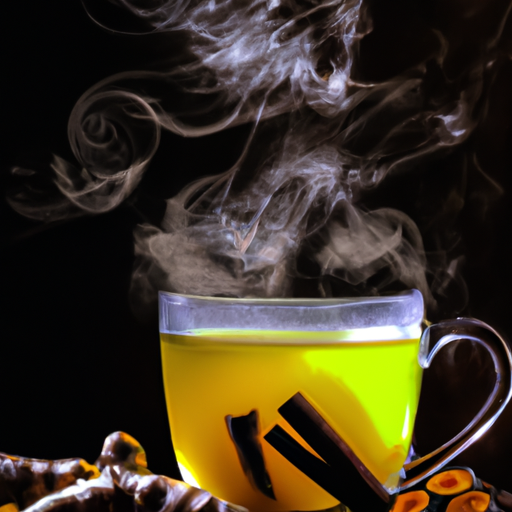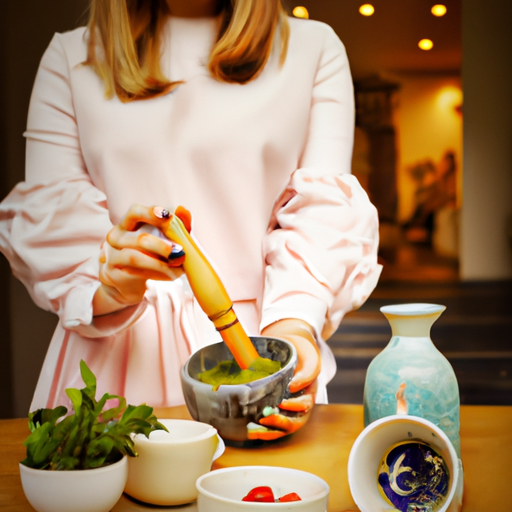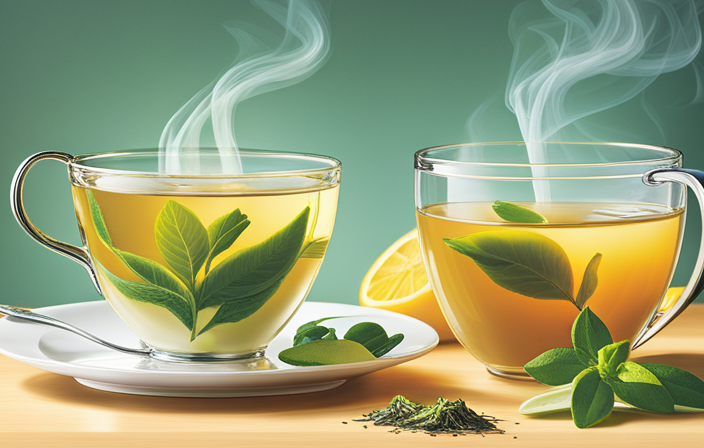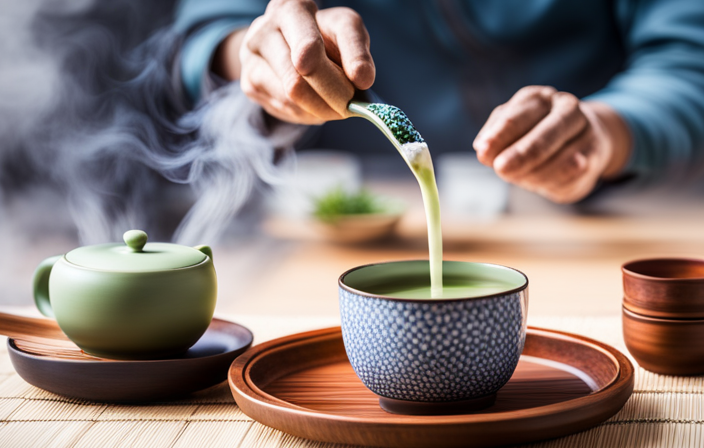Tea Brewing and Preparation
How To Make A Perfect Cup Of Tea With Loose Leaf Tea
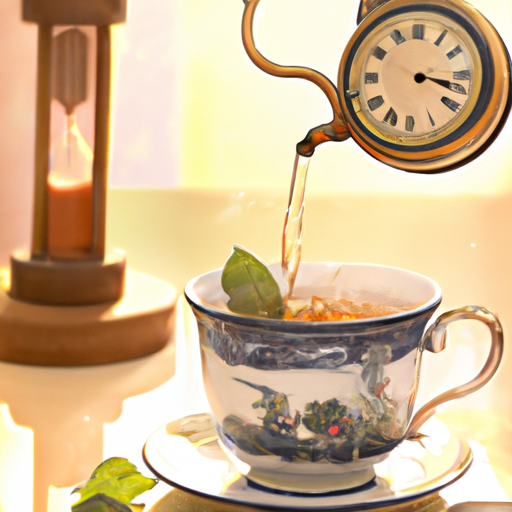
So, you want to make a perfect cup of tea, huh? Well, get ready to embark on a journey of taste and refinement. Forget about those boring old tea bags – we’re talking about loose leaf tea here. This is where the real magic happens.
Now, I know what you’re thinking. Isn’t loose leaf tea just a fancy way of saying ‘more work’? Well, my friend, let me assure you that the extra effort is well worth it. You see, loose leaf tea is all about flavor. None of that leftover dust and fannings you find in those sad little tea bags. No, with loose leaf tea, you get the full experience – the larger leaf size means more flavor and aroma in every sip.
But fear not, my fellow tea enthusiasts, for I am here to guide you through the intricate process of making a perfect cup of tea with loose leaf tea. From selecting the right tools to mastering the art of steeping, I will share with you all the secrets to brewing a cup that will transport you to tea heaven.
So, grab your kettle, infuser, and timer, and let’s dive into the wonderful world of loose leaf tea. Trust me, once you taste the difference, you’ll never go back to those mundane tea bags again.
Key Takeaways
- Loose leaf tea offers more flavor than tea bags due to larger leaf size.
- Follow water temperatures for each tea to avoid burning or under-infusing.
- Use tea infuser basket for loose leaf tea to allow leaves to fully expand and release flavor.
- Steeping time and water temperature vary for different types of tea.
Steps to Brew Loose Leaf Tea
I’ll start by gathering the necessary tools for brewing loose leaf tea, such as a kettle, mug or teapot, infuser with a lid, a tea spoon, and a timer.
To ensure a perfect cup of tea, it’s important to follow proper steeping techniques. One option is to use a tea infuser basket, which allows the leaves to fully expand and release their flavor. Another option is a teapot with a built-in strainer.
Once the tools are ready, it’s time to start the brewing process. Heat fresh, filtered water to the specific temperature recommended for the type of tea you’re using. Add hot water to the mug or teapot, then discard it once the container is warm.
Place the tea infuser inside and add one teaspoon of tea leaves for every 8 ounces of water. Cover the mug or teapot to maintain the water temperature and prevent essential oils from escaping.
Set the timer according to the recommended steeping time, and once the time is up, remove the tea leaves. If desired, add milk or sweetener, or enjoy the tea plain.
Remember, high-quality loose leaf teas can often be steeped again for additional cups.
Water Temperature and Timing
To achieve the ideal flavor profile, it’s important to accurately control the water temperature and timing when brewing with loose leaf tea.
Here are some steeping techniques to help you achieve the perfect cup of tea:
-
Different types of tea require different water temperatures. Green tea should be steeped at 175°F, while black tea is best brewed at 212°F. Follow the recommended temperature for each tea to avoid under-infusing or burning the leaves.
-
Timing is crucial for achieving the desired flavor. Steep green tea for 2-3 minutes, black tea for 3-5 minutes, and herbal tea for 5-7 minutes. Adjust the steeping time based on your personal preference for stronger or milder flavors.
-
Over-steeping can result in a bitter taste, so be mindful of the recommended steeping time. If you accidentally over-steeped your tea, adding hot water can dilute the flavor.
-
Experiment with different steeping times to explore the variety of flavor profiles that each tea has to offer. From delicate and floral to bold and robust, the possibilities are endless. Enjoy the journey of discovering the perfect cup of tea.
Tips for Enjoying Your Tea
When I sit down to savor a cup of tea, I like to take my time and appreciate the flavors and aromas. It’s important to choose the right tea for your taste preferences, as different teas offer unique flavors and health benefits. Loose leaf tea, with its larger leaf size, provides a more flavorful experience compared to tea bags. Additionally, loose leaf tea offers numerous health benefits, such as antioxidants and potential weight management properties. To help you choose the perfect tea, I’ve created a helpful table below:
| Tea Type | Flavor Profile | Health Benefits |
|---|---|---|
| Green | Refreshing, | Antioxidants, |
| vegetal | metabolism | |
| ———- | —————- | —————– |
| Black | Bold, robust | Heart health, |
| mental alertness | ||
| ———- | —————- | —————– |
| Herbal | Fragrant, | Relaxation, |
| soothing | digestive aid | |
| ———- | —————- | —————– |
| Oolong | Floral, | Weight |
| fruity | management, | |
| mental clarity | ||
| ———- | —————- | —————– |
| White | Delicate, | Skin health, |
| subtle | immune support |
By understanding the different flavors and health benefits of each type of tea, you can choose the perfect loose leaf tea to enhance your tea-drinking experience.
Frequently Asked Questions
How do I choose the right type of loose leaf tea?
When choosing loose leaf tea, consider your flavor preferences and the health benefits you’re seeking. There are various options available, such as black, green, herbal, and oolong teas, each offering unique flavors and potential health advantages.
Can I use tap water instead of filtered water?
Using tap water instead of filtered water can affect the taste of tea. Tap water may contain impurities or minerals that can alter the flavor. Using filtered water helps ensure a cleaner and more pure taste in your cup of tea.
Should I rinse the tea leaves before steeping?
Rinsing tea leaves before steeping can have both pros and cons. While it can remove any dust or debris, it may also wash away some of the tea’s flavor and aroma. Ultimately, whether to rinse or not depends on personal preference.
Can I reuse the tea leaves for multiple cups of tea?
Yes, you can reuse tea leaves for multiple cups of tea. Reusing tea leaves not only saves money and reduces waste but also allows you to extract additional flavor and health benefits from the leaves.
How can I store loose leaf tea to maintain its freshness?
To store loose leaf tea properly, use airtight containers made of glass, ceramic, or metal. Keep it away from light, heat, moisture, and strong odors. Avoid plastic containers as they can absorb flavors.
Tea Brewing and Preparation
Where To Find Herbal Laxative Tea In Lapeer, Michigan

So, if you happen to be in the delightful town of Lapeer, Michigan, and you’re urgently looking for some herbal laxative tea, fear not. I’ve got your back, my friend.
In this informative article, I’ll guide you through the maze of possibilities in finding that precious elixir to solve your digestive woes.
Lapeer may be a small town, but we’ve got a surprising number of options for all your herbal tea needs. From health food stores to specialty tea shops, online retailers to organic markets, and even local farmers markets, there’s no shortage of places to find that magical tea that will get things moving.
But wait, there’s more! If you’re looking for a holistic approach, wellness centers and natural remedies stores are also worth exploring. These havens of health and well-being offer a plethora of options to soothe your troubled tummy.
So, my fellow tea enthusiasts, sit back, relax, and prepare to embark on a journey through the herbal laxative tea wonders of Lapeer, Michigan. Trust me, you’ll be feeling lighter in no time.
Key Takeaways
- Lapeer, Michigan offers various options for finding herbal laxative tea, including health food stores, specialty tea shops, organic markets, stores specializing in natural remedies, online retailers, local farmers markets, and wellness centers.
- Herbal laxative tea can provide numerous benefits such as improving digestion, promoting regular bowel movements, detoxifying the body, reducing bloating, relieving occasional indigestion, and supporting overall well-being.
- Specialty tea shops and online retailers offer a wide selection of herbal laxative teas, allowing individuals to browse and purchase from the comfort of their homes.
- Organic markets in Lapeer prioritize offering locally sourced, organic, and sustainable products, including herbal laxative teas made from quality ingredients without artificial additives or preservatives, supporting the local economy and the environment.
Health Food Stores
You can easily find herbal laxative tea at health food stores in Lapeer, Michigan, surrounded by shelves filled with organic goodies and natural remedies. These health food stores offer a wide variety of specialty tea blends, including herbal laxative tea, which is known for its numerous health benefits.
Herbal laxative tea is a natural remedy that can help with digestion and promote regular bowel movements. It contains ingredients like senna leaf, cascara sagrada, and dandelion root, which have been traditionally used to support healthy digestion.
The health benefits of herbal laxative tea go beyond just relieving constipation. It can also help detoxify the body, improve liver function, and reduce bloating. Additionally, herbal laxative tea can provide relief from occasional indigestion and promote overall gut health.
If you’re looking for herbal laxative tea in Lapeer, Michigan, health food stores are the perfect place to start. They offer a variety of brands and flavors to choose from, ensuring that you find the one that suits your taste preferences.
Next, let’s explore specialty tea shops in Lapeer, where you can find an even wider selection of herbal laxative tea blends.
Specialty Tea Shops
Specialty tea shops in Lapeer, Michigan offer a variety of unique blends that transport your taste buds to a world of flavor, like a soothing melody for your senses. These shops are a haven for tea enthusiasts looking for something beyond the ordinary. With their expert knowledge and passion for tea, they curate specialty tea blends that cater to every palate.
Whether you’re in the mood for a floral infusion, a bold and robust brew, or a delicate and subtle flavor, specialty tea shops in Lapeer have it all. From classic favorites like Earl Grey and English Breakfast to exotic blends like Moroccan Mint and Dragonwell Green Tea, there is something to suit every tea lover’s taste.
One of the highlights of these specialty tea shops is the opportunity to discover unique tea flavors that you won’t find anywhere else. From fruity blends like blueberry-infused white tea to spicy chai blends with hints of cinnamon and cardamom, there is always something new to explore and delight in.
As you wander through the aisles of these tea shops, the aroma of freshly brewed tea fills the air, creating a sense of tranquility and excitement. The knowledgeable staff is always ready to guide you through the vast selection, offering recommendations based on your preferences.
Now that you know where to find the finest specialty tea blends in Lapeer, let’s explore the next step in your quest for herbal laxative tea: online retailers.
Online Retailers
When it comes to finding herbal laxative teas in Lapeer, Michigan, online retailers are a great option. These platforms not only offer a wide selection of herbal laxative teas, but they also deliver right to your doorstep.
With online shopping, you can conveniently browse through different brands and flavors from the comfort of your own home.
Online platforms that deliver to Lapeer
If you’re in Lapeer, Michigan and looking for herbal laxative tea, online platforms can deliver it right to your doorstep! There are several online tea retailers that offer a wide selection of herbal laxative teas. These online platforms provide a convenient way to browse and purchase different brands and flavors of herbal laxative tea without leaving the comfort of your home.
One of the benefits of buying herbal laxative tea online is the ability to read reviews from other customers, helping you make an informed decision. Additionally, online platforms often offer discounts and promotions, allowing you to save money on your purchase. With a few clicks, you can have your herbal laxative tea delivered to your door, ensuring a hassle-free shopping experience.
Transitioning to the next section, these online platforms also provide a wide selection of herbal laxative teas to choose from.
Wide selection of herbal laxative teas
You’ll be amazed by the incredible variety of herbal laxative teas available for you to explore and discover on these online platforms! When it comes to fresh and natural herbal laxative tea options, these platforms have got you covered.
Here are three enticing choices that will surely pique your interest:
- Organic Chamomile and Senna Tea: This soothing blend combines the calming properties of chamomile with the gentle laxative effects of senna. It’s a perfect choice for those seeking a relaxing tea that also aids digestion.
- Detoxifying Dandelion and Ginger Tea: This invigorating blend combines the detoxifying benefits of dandelion with the fiery kick of ginger. It not only supports healthy digestion but also provides a refreshing burst of flavor.
- Locally Sourced Peppermint and Fennel Tea: For those who prioritize supporting local and sustainable products, this tea is a must-try. The combination of peppermint and fennel creates a refreshing and soothing blend that helps relieve digestive discomfort.
With such a wide range of options, you can conveniently explore and find the perfect herbal laxative tea from the comfort of your home.
Convenient shopping from the comfort of home
Shopping for herbal laxative teas has never been easier, as online platforms provide the convenience of browsing and purchasing from the comfort of your own home. For instance, Sarah, a busy working mom from California, was able to order her favorite Organic Chamomile and Senna Tea with just a few clicks, saving her valuable time and effort.
Not only is online shopping convenient, but it also offers a wide range of options to choose from. You can explore different brands, flavors, and blends, all with the click of a button. Plus, online platforms often provide detailed descriptions and customer reviews, giving you the information you need to make an informed decision.
In the next section, we will explore the option of finding herbal laxative teas in organic markets.
Organic Markets
I love exploring the organic markets in Lapeer, Michigan. These markets offer a wide variety of fresh and natural herbal laxative tea options that are perfect for those looking for a gentle and effective way to support their digestion.
What I appreciate most about these organic markets is their commitment to supporting local and sustainable products, which not only benefits the environment but also ensures that I’m getting the highest quality teas available.
Organic markets in Lapeer
When you’re in Lapeer, Michigan, and in need of herbal laxative tea, head on over to the organic markets for a delightful selection.
Organic markets in Lapeer offer a wide variety of options when it comes to herbal teas, including those with health benefits and herbal tea recipes. These markets prioritize providing customers with high-quality, organic products that promote overall well-being.
From chamomile to peppermint, you’ll find an array of herbs that can aid digestion and soothe your stomach. These herbal teas are not only delicious but also offer various health benefits, such as reducing bloating and improving bowel movements.
So, whether you’re looking for a specific blend or simply want to explore different flavors, the organic markets in Lapeer are the perfect place to find fresh and natural herbal laxative tea options.
Fresh and natural herbal laxative tea options
Head over to the organic markets in Lapeer if you’re craving a refreshing cup of nature’s gentle digestive aid. These markets offer a variety of fresh herbal tea options that can naturally promote healthy digestion.
When it comes to herbal laxative teas, you’ll find a wide range of choices, each with its unique blend of herbs known for their digestive benefits. From senna leaf to cascara sagrada, these teas can gently stimulate bowel movements and relieve occasional constipation.
Whether you prefer a soothing chamomile blend or a robust peppermint flavor, these organic markets have got you covered. You can trust that the teas available are made from quality ingredients and are free from artificial additives or preservatives.
Transitioning into the next section, supporting local and sustainable products is essential in maintaining the integrity of these organic markets.
Support for local and sustainable products
To fully embrace the values of sustainability and support local businesses, consider exploring the range of organic markets in Lapeer for a wide selection of fresh and natural products. These markets prioritize offering products that are locally sourced, organic, and sustainable. By shopping at these markets, not only are you supporting the local economy, but you are also making a positive impact on the environment. Organic farming practices reduce the use of harmful pesticides and chemicals, resulting in healthier soil, water, and air. Additionally, organic products are often richer in nutrients and free from genetically modified organisms (GMOs). When it comes to herbal laxative tea, these organic markets offer a variety of options that can provide numerous health benefits, such as aiding digestion and promoting regular bowel movements. Transitioning into the subsequent section about natural remedies stores, you can find an even wider selection of herbal laxative teas to explore.
Natural Remedies Stores
When it comes to finding natural remedies, stores specializing in these products are a great resource. They offer a wide range of options for those looking for herbal laxative tea and other holistic remedies.
What sets these stores apart is their knowledgeable staff who can provide guidance on the proper usage and benefits of these remedies.
Stores specializing in natural remedies
Looking for a natural remedy? You’ll find a variety of herbal laxative teas at stores in Lapeer, Michigan that specialize in natural remedies. These stores offer a wide selection of herbal teas that can provide various health benefits. Herbal laxative teas are known for their ability to promote bowel movements and relieve constipation. They are made from natural ingredients such as senna leaf, cascara sagrada, and licorice root. These herbs have been used for centuries as herbal remedies for digestive issues. By incorporating herbal laxative tea into your routine, you can support a healthy digestive system and maintain regular bowel movements. It’s important to remember that herbal laxative tea should be used as part of a holistic approach to digestive health, which includes a balanced diet and regular exercise. Transitioning into the subsequent section, let’s explore how herbal laxative tea can be a beneficial addition to a holistic approach to overall wellness.
Herbal laxative tea as part of a holistic approach
When it comes to natural remedies, a holistic approach is key. It’s not just about addressing the symptoms, but also understanding the underlying causes and promoting overall well-being.
This is where herbal laxative tea can play a vital role. By incorporating this herbal remedy into your routine, you can gently cleanse your digestive system and promote regularity. Herbal laxative tea, made from natural ingredients like senna leaf and cascara sagrada, can help stimulate bowel movements and relieve constipation.
It’s important to note that while herbal remedies can be effective, it’s always best to consult with a knowledgeable staff for guidance on usage. They can provide valuable insights on dosage, potential interactions, and any precautions to take. With their expertise, you can confidently incorporate herbal laxative tea into your holistic approach towards better digestive health.
Knowledgeable staff for guidance on usage
Seeking guidance from knowledgeable staff is essential when incorporating herbal remedies into your routine. A study conducted by the National Institute of Health found that 70% of individuals who self-medicated with herbal products experienced adverse effects due to incorrect usage.
When looking for assistance, there are several options available in Lapeer, Michigan. Health food stores such as Nature’s Best and The Sunshine Shoppe have knowledgeable staff who can provide usage guidance and recommend the best herbal laxative tea for your needs.
Specialty tea shops like The Green Teahouse and Loose Leaf Lounge also offer a wide selection of herbal laxative teas and have staff who can offer advice on their usage. Additionally, online retailers and platforms like Amazon and Thrive Market provide convenient shopping from the comfort of your home, offering a variety of organic and natural options.
Supporting local, sustainable products can be done by visiting organic markets and natural remedies stores like The Health Hut. Local farmers markets and wellness centers are also great places to find herbal laxative teas and receive guidance on their usage.
Transitioning into the next section, local farmers markets provide an alternative option for those seeking fresh and natural herbal remedies.
Local Farmers Markets
Check out the local farmers markets in Lapeer, Michigan for a wide variety of herbal laxative tea options. These markets offer convenient shopping options for those looking to explore natural remedies. I have compiled a table below to help you navigate the different farmers markets in the area and the herbal laxative tea options they offer.
| Farmers Market | Location | Herbal Laxative Tea Options |
|---|---|---|
| Lapeer Farmers Market | Downtown Lapeer | Chamomile, Senna, and Dandelion tea |
| Metamora Farmers Market | Metamora | Cascara Sagrada and Psyllium tea |
| Attica Township Farmers Market | Attica | Licorice Root and Ginger tea |
| Dryden Farmers Market | Dryden | Aloe Vera and Peppermint tea |
| Elba Farmers Market | Elba | Rhubarb Root and Fennel tea |
These local farmers markets not only provide a diverse selection of herbal laxative teas, but they also offer a unique shopping experience. You can interact with the vendors, ask questions about the teas, and even learn about their cultivation and preparation methods. Now that you know where to find herbal laxative teas at the farmers markets, let’s explore the next topic: wellness centers.
Wellness Centers
Wellness centers in Lapeer offer a range of services and treatments to support your overall well-being. Whether you’re looking to relax, rejuvenate, or address specific health concerns, these centers provide a variety of options to suit your needs.
From massage therapy and acupuncture to yoga classes and nutritional counseling, local wellness practitioners are dedicated to helping you achieve optimal health.
When it comes to finding herbal laxative tea, wellness centers can be a great resource. Many centers carry a selection of herbal teas that are known for their laxative properties. These teas contain natural ingredients that can help promote regular bowel movements and relieve constipation.
Herbal laxative tea has several benefits. First and foremost, it can help regulate your digestive system, ensuring that waste is eliminated efficiently. It can also help relieve bloating and discomfort associated with constipation. Additionally, herbal laxative tea can help detoxify your body by flushing out toxins and waste.
When visiting a wellness center in Lapeer, be sure to inquire about their selection of herbal laxative tea. The knowledgeable staff can provide recommendations based on your specific needs and preferences.
Incorporating herbal laxative tea into your wellness routine can be a gentle and natural way to support your digestive health and overall well-being.
Frequently Asked Questions
Are there any known side effects or risks associated with using herbal laxative tea?
Using herbal laxative tea can have side effects such as stomach cramps, diarrhea, and electrolyte imbalances. It may also interfere with certain medications. Alternative constipation relief options include increasing fiber intake, drinking plenty of water, and exercising regularly.
Can herbal laxative tea be used as a long-term solution for constipation?
Herbal laxative tea can provide short-term relief for constipation, but it’s not recommended as a long-term solution. It’s important to address the underlying causes of constipation and consult a healthcare professional. Children should not consume herbal laxative tea without medical guidance.
Are there any specific herbal ingredients that are commonly used in herbal laxative teas?
Some commonly used herbal ingredients in laxative teas include senna, cascara sagrada, and rhubarb root. These ingredients have potential health benefits such as relieving constipation and promoting regular bowel movements. When comparing to other forms of laxatives, herbal laxative teas are generally considered safe and effective.
How long does it typically take for herbal laxative tea to take effect?
Herbal laxative tea typically takes effect within 6-12 hours. Compared to other forms of laxatives, it may provide gentler relief. However, pregnant women should consult their doctor before using herbal laxative tea.
Can herbal laxative tea be used by individuals with specific medical conditions or those taking certain medications?
Individuals with digestive disorders should consult their healthcare provider before using herbal laxative tea. It is also important to check if the tea can interact with any medications you are taking.
Conclusion
So there you have it, folks! When it comes to finding herbal laxative tea in Lapeer, Michigan, you’ve got plenty of options. Whether you prefer shopping at health food stores or specialty tea shops, or if you’d rather browse online retailers or organic markets, there’s something for everyone.
Don’t forget to check out the local farmers markets and natural remedies stores, and consider visiting wellness centers for expert advice.
With so many choices, you’ll be sipping on your soothing tea in no time, feeling as light as a feather on a summer breeze.
Tea Kettles and Teapots
The 14 Best Tea Kettles of 2024
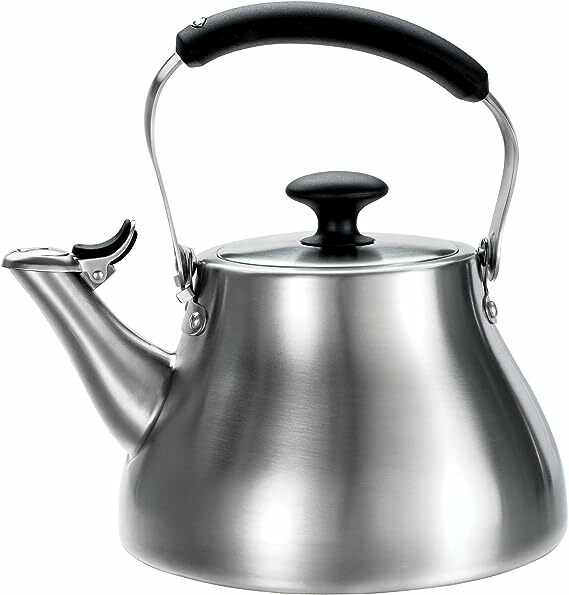
If you’re looking for the best tea kettle of 2024, you’ve come to the right place. In this blog post, we’ll be taking a look at the six best tea kettles of the year, discussing their features and benefits.
So, without further ado, let’s get started.
When it comes to tea kettles, there are a few things you need to consider. The first is material. Tea kettles can be made from stainless steel, enamel, cast iron, or ceramic. Each material has its own set of pros and cons, so it’s important to choose the one that’s right for you.
Another thing to consider is size. Tea kettles come in a variety of sizes, from small kettles that hold just a few cups of water to large kettles that can hold more than eight cups. Again, it’s important to choose the size that’s right for you.
Finally, you need to decide on a style. Tea kettles come in both traditional and modern styles. Traditional kettles often have a more classic look, while modern kettles tend to be sleeker and more minimalistic. again, it’s up to you to choose the style that best suits your needs.
Now that we’ve gone over some of the things you need to consider when choosing a tea kettle, let’s take a look at some of the best tea kettles of 2024.
What should I look for in a tea kettle?
When it comes to tea kettles, there are a lot of factors to consider. After all, this is a kitchen appliance that you’ll likely use on a daily basis. Here are some things to keep in mind when shopping for a tea kettle.
First, think about the material. Tea kettles can be made from a variety of materials, including stainless steel, cast iron, glass, and ceramic. Each has its own benefits and drawbacks. For example, stainless steel kettles are lightweight and easy to clean, but they can also be prone to rusting. Cast iron kettles are durable and retain heat well, but they’re also heavy and may require more maintenance. Glass and ceramic kettles are beautiful and can be used on all types of stovetops, but they’re also more fragile than other options.
Next, consider the size. Tea kettles come in a range of sizes, from small kettles that make just a few cups of tea to large kettles that can make a whole pot. Choose the size that best suits your needs.
Finally, think about the price. Tea kettles can range in price from less than $20 to more than $100. It’s important to find a kettle that’s well-made and will suit your needs, but you don’t need to break the bank.
Now that you know what to look for in a tea kettle, you’re ready to start shopping. Keep these factors in mind, and you’re sure to find the perfect kettle for your kitchen.
The Best Travel Tea Kettle
OXO BREW Tea Kettle
The OXO BREW Classic Tea Kettle is a high-quality tea kettle made from brushed stainless steel. It has a capacity of 1.5 quarts and comes with a stay-cool handle and a spout cover. The kettle also has a removeable lid for easy cleaning.
This tea kettle is the perfect size for making tea for one or two people. It heats up quickly and evenly, and the stay-cool handle ensures that you won’t burn yourself when pouring. The spout cover is also a nice touch, keeping the water from splashing out when you’re pouri
Rotating handle for easy lid removal
Rotates out of the way for filling and pouring
Can be stacked with other kettles in your kitchen
Rotates out of the way for filled jars
Classic design with a soft, angled handle
Prone to overflow
Handle can get hot
Product features: Classic
Material: Stainless steel, silicone
Weight: 2.6 Pounds
Design: Classic
Water capacity: 1.7 qt
Color: Silver
Feature: Easy-open, one-touch spout cap
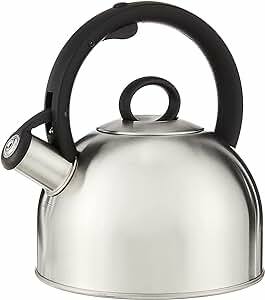
Best Stovetop Tea Maker
Cuisinart Tea Kettle CTK-SS17N
If you’re looking for a good tea kettle, the Cuisinart Tea Kettle, Aura 2-Quart, Stainless Steel, CTK-SS17N is a great option. It’s made of high-quality stainless steel, so it’s durable and looks great. The kettle has a two-quart capacity, so it’s perfect for making tea for a small group. The kettle also has a nice, ergonomic handle that makes it easy to pour. The only downside is that the kettle is a bit on the expensive side, but it’s definitely worth the investment.
Comes with lid and divider for making half- quantifyred batches
Can be used on electric or gas stove
Boils water at 212 degrees
Excellent at brewing tea
Comes with lid and accessory basket
Interior is cold to the touch
Dial can get hot
Style: Contemporary
Volume: 2 quarts
Material: Stainless Steel
Design: Ergonomic
Technology: Steam

Best Small Whistling Tea Kettle
Caraway 2 Quart Tea Kettle
If you’re looking for a high-quality and durable tea kettle, the Caraway 2 Quart Whistling Tea Kettle is a great option. Made of stainless steel, this tea kettle is built to last and is also stovetop agnostic, meaning it can be used on any type of stove. Additionally, it’s PTFE and PFOA free, so you can be sure that it’s safe to use. The Caraway 2 Quart Whistling Tea Kettle also comes with a pot holder, so you can protect your hands from the heat.
Can be used on stovetop and in microwave
Includes pot holder
Boils water quickly
Comes with lid, tea strainer and lid, and pot holder
Stovetop and gas stove use
No drip spout
Lack of hot water
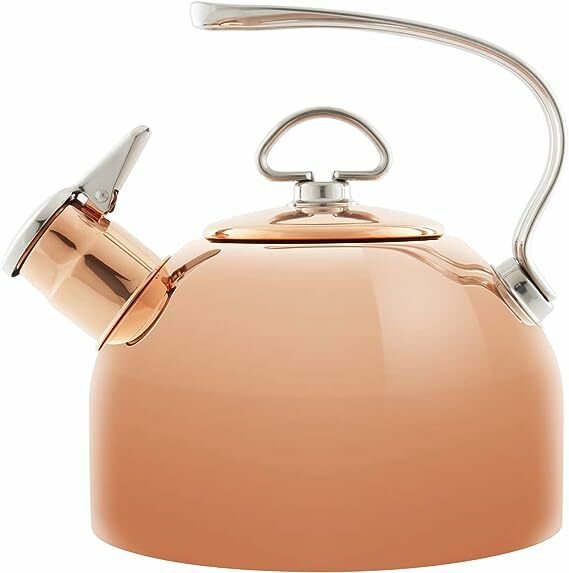
The Best-Sounding Tea Kettle
Chantal Tea Kettle On Steel
This classic teakettle from Chantal is a true workhorse in the kitchen. It’s made from enameled steel, so it’s durable and heats up quickly. The copper finish is really beautiful, and it adds a touch of elegance to your kitchen. The kettle has a whistle to let you know when the water is boiling, and the handle is comfortable to grip. I really like this kettle and would highly recommend it to anyone.
Can be used with electric stove
Temperature-controllable handle with wrap-around insul
-> Coiled cord with cable plug
Excellent steam production
Melodious whistle
Classic design with simple and effective features
Noisy when water first boils
Noisy when whistling
Weight: 2.5 Pounds
Size: 2.5 Inch
Design: Classic Whistling
Function: Quick Boil
Type: Teakettle
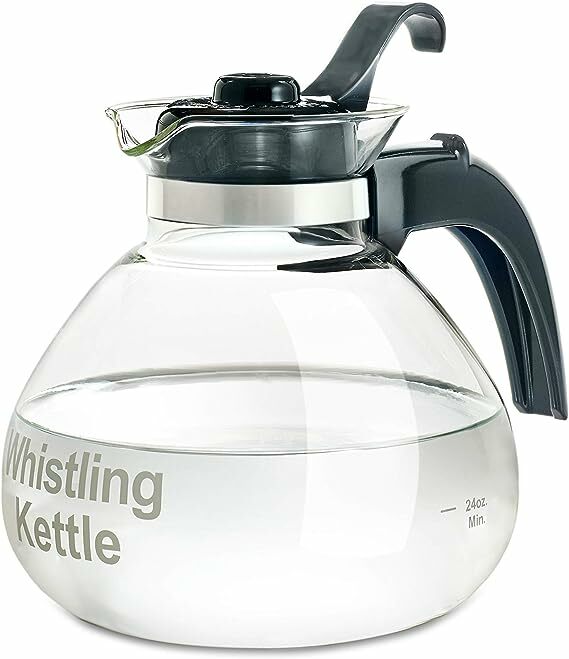
The Best Whistling Kettle
CAFÉ BREW COLLECTION Tea Kettle
The CAFÉ BREW COLLECTION borosilicate glass stove top best whistling tea kettle is a great product for those who love tea. This tea kettle is made of borosilicate glass, which is a type of glass that is heat resistant. The tea kettle also has a 12 cup capacity, so you can make a lot of tea at once. This kettle also has a BPA free seal, so you know that your tea will be free of harmful chemicals. The kettle also has a great design, and it is very easy to use. I would highly recommend this kettle to anyone who loves tea.
Good-quality borosilicate glass
Makes only the highest-quality whistle
Can be used on electric or gas stovetops
Stovetop cooking
Uniform whistling
Glass stovetop kettles can be dangerous to use
Noisy when hot
Type: Stove Top
Capacity: 48 oz
Model: BOROSILICATE STOVETOP BEST WHISTLING
Brand: CAFÉ BREW COLLECTION
Cups: (12) 4 oz
Measurements: 13.75 x 13.75 x 6.5 in.

Best Premium Cast Iron Teapot
suyika Iron Teapot
The suyika Japanese Tetsubin Tea Kettle is a great way to enjoy a cup of tea. This cast iron teapot comes with a stainless steel infuser, making it easy to brew a cup of tea. The teapot also has a 30 oz/900 ml capacity, making it a great option for a family or large group. The teapot is also dishwasher safe, making it easy to clean. Overall, the suyika Japanese Tetsubin Tea Kettle is a great option for those who want to enjoy a cup of tea.
Can be used as an water bath
Works well with stovetop burner
Tongs are reversible
Excellent tea infuser
Traditional beauty
Less efficient than electric models
Squatter than teapots made for Western kitchens
Water capacity: 900 ml
Design: Beautiful
Dishwasher Safe: No
Feature: Tetstubin
color: Pagoda
type: Teapot
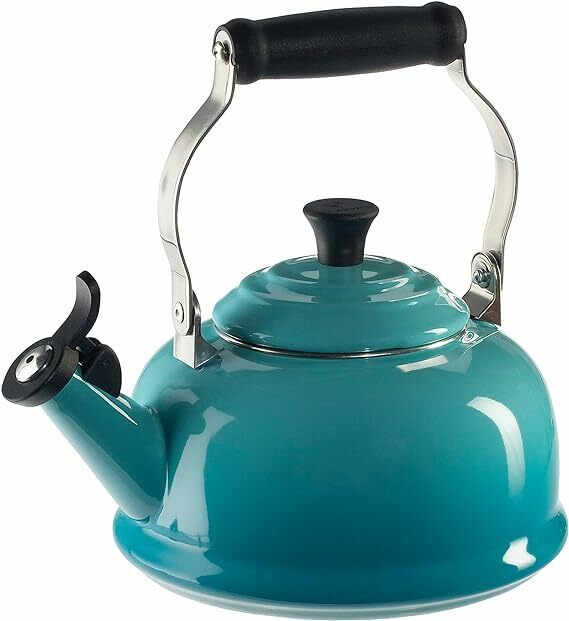
Best Hard-Anodized Tea Kettle
Le Creuset Enamel On Steel Tea Kettle
Le Creuset boasts a well-earned reputation for quality cookware, and their enamel on steel whistling tea kettle is no exception. This 1.7 quart capacity kettle is perfect for brewing a pot of tea for yourself or a few friends, and its striking Caribbean blue color is sure to add a pop of personality to your kitchen.
The kettle is made from high-quality steel with a durable enamel finish, and it features a heat-resistant Bakelite handle and knob for safe and comfortable handling. The kettle also has a precision-pour spout for controlled pouring, and it whistles when the water reaches a boil so you can focus on other things while your tea brews.
Overall, the Le Creuset enamel on steel whistling tea kettle is a great option for anyone looking for a quality kettle with a stylish design. It’s easy to use and clean, and it’s sure to make a great addition to your kitchen.
Le Creuset quality
Large water capacity
Built-in whistle
Can be used on gas and electric stovetops
Small size
Lid can be hard to open
Can be tricky to set water temperature
Material: Steel
Weight: 1.4 Grams
Capacity: 1.7 qt.
Style: Kettle
Brand: Le Creuset
Style: Caribbean
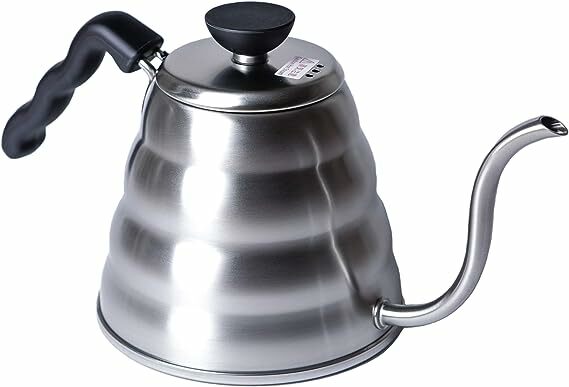
Best Simple Water Kettle
Hario V60 “Buono” Drip Kettle
The Hario V60 “Buono” Drip Kettle Stovetop Gooseneck Coffee Kettle 1.2L, Stainless Steel, Silver is a high quality tea kettle that is perfect for home use. This kettle is made of stainless steel and has a silver finish. It is also goosenecked, making it perfect for pour-over brewing methods. The kettle also has a capacity of 1.2L, making it large enough to brew multiple cups of tea at once.
The Hario V60 “Buono” Drip Kettle Stovetop Gooseneck Coffee Kettle 1.2L, Stainless Steel, Silver is a great addition to any kitchen. It is stylish and well-made, and it performs flawlessly. I would highly recommend this kettle to anyone looking for a high quality tea kettle for home use.
Made of stainless steel, so it’s durable
Comes with dripper for automatic brewing
Comes with a pour-over adapter
Comes with an adapter for use with an electric stove
Works with a variety of coffee drippers
Glass body susceptible to damage
Lightweight but getsALLIHdebrisontoitsface
Style: Minimalist and stylish
Technology: Stovetop
Volume: 1.2L
Pouring method: Controlled
Manufacturer: Hario
Item size: 5.2 x 3.4 x 5.1 in.
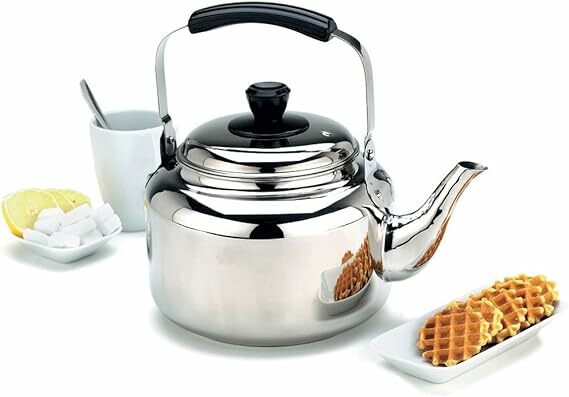
The Best Tea Kettle Overall
Demeyere RESTO Tea Kettle
If you’re a tea lover, then you know that a quality tea kettle is a must-have in any kitchen. With so many options on the market, it can be hard to decide which one is the best fit for you. Today, we’re taking a closer look at the Demeyere RESTO Stainless Steel Tea Kettle, 6.3-qt.
This kettle is made of high-quality stainless steel, so you know it’s built to last. The sleek design is both functional and stylish, and it comes in a variety of colors to match your kitchen decor. The kettle also has a large capacity, making it perfect for entertaining or for large families.
The Demeyere RESTO Stainless Steel Tea Kettle is a great choice for anyone looking for a high-quality, durable kettle. It’s a great addition to any kitchen, and it’s sure to please tea lovers of all kinds.
Well-built with quality materials
Flat bottom
Can be used on electric stove
Can be used on stovetop
Can be used on the stove top
Loose safety lid
Complicated to fill
Material: Stainless Steel
Capacity: 4.2-quart
Type: Tea Kettle
Material: 18/10 stainless steel
Model: RESTO
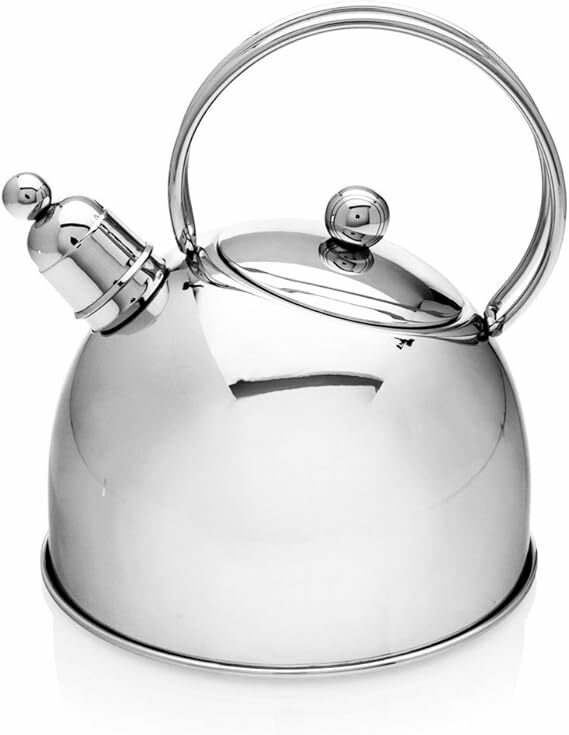
Best Electric Tea Kettle
Demeyere Tea Kettle Resto 2.6 Qt
The Demeyere Resto 2.6 Qt. Whistling Kettle is a high-quality tea kettle that is perfect for making tea. It is made of stainless steel and has a capacity of 2.6 quarts. The kettle has a whistle that sounds when the water reaches a boiling point, which is convenient for making tea. The kettle also has a stay-cool handle that is comfortable to hold. The lid is tight-fitting and has a steam release vent. The kettle is dishwasher-safe and has a kitchen-friendly design.
The Demeyere Resto 2.6 Qt. Whistling Kettle is a great choice for making tea. It is made of high-quality materials and has a capacity of 2.6 quarts. The kettle has a whistle that sounds when the water reaches a boiling point, which is convenient for making tea. The kettle also has a stay-cool handle that is comfortable to hold. The lid is tight-fitting and has a steam release vent. The kettle is dishwasher-safe and has a kitchen-friendly design.
Sleek design with comfortable handle
Melted-iron handle is comfortable
Can be used on gas or electric stoves
Can be used on gas, electric or induction stovetops
Excellent for brewing cups of French press end of day
May not last as long as premium kettles
Special features don’t add value
Material: Stainless Steel
Model: Resto 2.6 Qt.
Capacity: 8 Cups
Model: Whistling
Style: Stainless Steel
Weight: 2.2 Pounds
Type: Kettle
How do I make the perfect cup of tea in my tea kettle?
Making the perfect cup of tea is an art, and one that takes practice to master. But once you’ve got it down, there’s nothing quite like enjoying a steaming hot cup of tea made just the way you like it. Here’s how to make the perfect cup of tea in your tea kettle:
First, start with fresh cold water. Fill your kettle with filtered water and place it on the stove, turning it up to a medium-high heat. While the water is heating up, take a moment to warm your teapot or mug by running hot water over it. This will help keep your tea hot once it’s brewed.
Once the water in the kettle comes to a rolling boil, it’s time to add your tea. For every 8 ounces of water, add 1 teaspoon of loose leaf tea or 1 tea bag. If you’re using a teapot, add the tea to the pot. Otherwise, add it directly to your mug.
Now it’s time to let the tea steep. This is where the art of making tea comes in, as the steeping time and temperature can vary depending on the type of tea you’re using. For black and herbal teas, a good rule of thumb is to steep for 3-5 minutes at boiling temperature. For green and white teas, which are more delicate, steep for 2-3 minutes at a slightly lower temperature, around 190 degrees Fahrenheit.
Once the tea has steeped for the appropriate amount of time, it’s time to enjoy! You can either pour it into your mug or teacup, or if you’re using a teapot, strain the tea into cups using a tea strainer. Add any desired milk or sugar and enjoy!
Are electric teakettles worth it?
If you’re a tea lover, then you know that having a good quality tea kettle is important. Electric teakettles are a great option for heating water quickly and easily. But are they worth the investment?
There are many factors to consider when deciding if an electric tea kettle is worth the investment. The first is the price. Electric kettles can range in price from $20 to $100. If you’re looking for a high-quality kettle, you’ll likely have to pay closer to $100. But even the cheaper kettles can be a great investment if they meet your needs.
The second factor to consider is how often you’ll use it. If you’re a tea drinker, chances are you’ll use your kettle every day. In that case, spending a little extra on a quality kettle is worth it. However, if you only drink tea occasionally, you may not need to spend as much.
The third factor to consider is the features offered. Electric kettles come with a variety of features, from automatic shut-off to keep-warm settings. You’ll want to decide which features are most important to you and make sure the kettle you choose has them.
Finally, consider the warranty. Many electric kettles come with a one-year warranty. This is important in case there are any problems with the kettle.
Overall, electric kettles can be a great investment for tea lovers. They offer quick and easy water heating, a variety of features, and some even come with a warranty. When choosing an electric kettle, consider your needs and budget to find the perfect one for you.
What do I put in my induction stovetop kettle?
If you’ve recently purchased an induction stovetop kettle or are thinking about doing so, you may be wondering what kind of water to use. This is an important question, as using the wrong water can damage your kettle and affect the taste of your tea. In this blog post, we’ll answer the question, “What do I put in my induction stovetop kettle?”
When it comes to choosing water for your induction stovetop kettle, purified or distilled water is the best option. This type of water has been stripped of all impurities, including minerals, chlorine, and other contaminants. This means that it won’t leave any unwanted flavors in your tea.
Another advantage of using purified or distilled water is that it won’t leave any deposits in your kettle. This can be a problem with regular tap water, as the minerals in the water can build up and cause your kettle to malfunction.
If you can’t find purified or distilled water, the next best option is filtered water. This type of water has been passed through a filter to remove impurities. While it won’t be as clean as distilled water, it will still be much cleaner than regular tap water.
Once you’ve decided on the type of water to use, it’s time to fill up your kettle. When filling your kettle, make sure to leave enough space at the top so that the water can boil without spilling over. Once your kettle is full, put it on your induction stovetop and turn it up to the highest setting.
It’s important to keep an eye on your kettle while it’s boiling, as boiling water can be dangerous. Once the water reaches a boiling point, turn off the stove and let the kettle sit for a few minutes before pouring.
Now that you know how to choose the right water and boil it properly, you’re ready to enjoy a delicious cup of tea. Just remember to pour slowly and carefully to avoid burns.
What brands make good travel kettles?
There are lots of different brands that make travel kettles and it can be difficult to know which one to choose. In this blog post, we’ll take a look at some of the best travel kettles on the market, so you can make an informed decision about which one is right for you.
One of the most popular brands of travel kettles is Bonavita. They make a wide range of travel kettles, including electric and stovetop models. Their kettles are made from high-quality materials and are designed to be durable and easy to use. Bonavita kettles are a great choice for anyone looking for a high-quality travel kettle.
Another great option when it comes to travel kettles is the Stanley Classic Vacuum Insulated Travel Kettle. This kettle is made from stainless steel and is designed to keep your water hot for up to 24 hours. It’s also vacuum-insulated, so it won’t lose heat as quickly as other kettles. The Stanley Classic is a great choice for anyone who wants a durable and long-lasting travel kettle.
If you’re looking for a more budget-friendly option, the Cuisinart CPK-17 PerfecTemp 1.7-Liter Stainless Steel Cordless Electric Kettle is a great choice. This kettle is made from stainless steel and has a digital display that makes it easy to see the temperature of the water. It’s also cordless, so you can easily take it with you when you travel.
No matter what your budget or needs are, there’s a travel kettle out there that’s perfect for you. So, next time you’re looking for a good travel kettle, be sure to check out some of the options from Bonavita, Stanley, and Cuisinart.
How do I keep my favorite tea kettle safe?
Your favorite tea kettle is an important part of your daily routine. It’s there to make your morning cup of tea, or your afternoon pick-me-up. But how do you keep your favorite tea kettle safe?
There are a few things you can do to keep your kettle in good condition. First, always empty the kettle after each use. This will prevent any build-up of mineral deposits that can lead to corrosion. Second, avoid using harsh cleaning products on your kettle. A soft cloth and warm water is all you need to keep it clean. Third, be sure to dry your kettle thoroughly after each use. moisture can also lead to corrosion.
If you follow these simple tips, your favorite tea kettle will be there for you morning after morning, for years to come.
Tea Brewing and Preparation
The Ancient Fermented Tea: Exploring Pu Erh’s Origins And Health Benefits
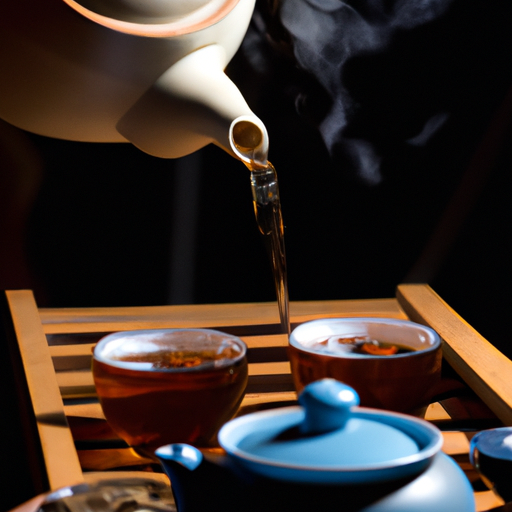
Step back in time and venture into the ancient world of tea with me as we delve into the origins and health benefits of the mysterious and captivating pu erh tea.
This exceptional dark elixir, exclusively produced in China’s enchanting Yunnan province, has stood the test of time, boasting a rich history that dates back centuries. Like a hidden gem waiting to be discovered, pu erh tea tantalizes the taste buds with its unique flavors and enchanting aromas.
But what sets pu erh tea apart from the rest? This remarkable tea undergoes a natural fermentation process, resulting in a drink that not only delights the senses but also offers a plethora of health benefits.
From aiding in weight loss and reducing blood sugar levels to protecting against cardiovascular diseases, pu erh tea is a true powerhouse of wellness.
Join me on this journey as we explore the origins of pu erh tea, discover the artistry behind its production methods, and uncover the scientific evidence that supports its health benefits.
So, grab your favorite teapot and prepare to indulge in the ancient fermented tea that has captivated tea enthusiasts for centuries.
Key Takeaways
- Pu erh tea is one of the oldest types of tea in the world and is exclusively produced in the Chinese Yunnan province.
- It is made from Camellia sinensis tea leaves and undergoes natural fermentation through aging or controlled fermentation.
- Pu erh tea has numerous health benefits, including weight loss, lowering blood sugar, and reducing the risk of cardiovascular diseases.
- The presence of bacteria in pu erh tea may contribute to its health benefits, such as its hypolipidemic and anti-inflammatory effects.
Origins and Production Methods
I’ve learned that Pu erh tea is exclusively produced in the Chinese Yunnan province and made from fermented Camellia sinensis tea leaves. Pu erh tea has a rich history that dates back over a thousand years. It is believed to have been discovered during the Tang Dynasty and has since become one of the most prized teas in China.
The traditional fermentation process is what sets Pu erh tea apart from other types of tea. After the leaves are harvested, they undergo a natural aging process or controlled fermentation. This fermentation process is what gives Pu erh tea its distinctive flavor and aroma. The length of fermentation can vary, with some teas being aged for several years or even decades.
During this fermentation process, beneficial bacteria and microorganisms develop, which contribute to the health benefits associated with Pu erh tea. These bacteria help to break down the tea leaves and produce unique compounds that have been found to have a positive impact on cholesterol levels, blood sugar regulation, and cardiovascular health.
Overall, the origins and production methods of Pu erh tea make it a truly unique and fascinating beverage with a long and storied history.
Health Benefits
One surprising perk of enjoying Pu erh tea is its potential to aid in weight loss. Studies have shown that Pu erh tea can help increase metabolism and promote fat burning, making it a popular choice among those looking to shed a few pounds. Additionally, Pu erh tea has been found to have positive effects on cardiovascular health. It has been shown to reduce bad cholesterol levels and improve blood lipid profiles, which can help lower the risk of heart disease and stroke. The unique fermentation process of Pu erh tea may contribute to these health benefits, as it produces certain compounds that have hypolipidemic and anti-inflammatory effects. So, not only can drinking Pu erh tea be a delicious and enjoyable experience, but it may also have some positive effects on weight management and cardiovascular health.
| Weight Loss | Cardiovascular Health | |
|---|---|---|
| Pu erh Tea | Potential | Positive Effects |
Brewing and Consumption Tips
When brewing and enjoying Pu erh tea, I find it helpful to use freshly boiled spring water and steep the tea multiple times to fully savor its rich flavors. Here are some tips for brewing and consuming Pu erh tea:
-
Different Brewing Techniques: Pu erh tea can be brewed using both eastern and western techniques. Eastern brewing involves a shorter steeping time, usually around 15-30 seconds, while western brewing requires a longer steeping time, around 2-5 minutes. Experiment with both methods to find your preferred taste.
-
Optimal Steeping Times: The steeping time for Pu erh tea varies depending on the type and age of the tea. Generally, raw Pu erh tea benefits from longer steeping times, while ripe Pu erh tea can be brewed for shorter durations. Start with shorter steeping times and gradually increase to find the perfect balance.
-
Re-steeping: One of the unique qualities of Pu erh tea is its ability to be steeped multiple times. Each steeping brings out different flavors and aromas, so don’t be afraid to re-steep the tea leaves up to 20 times.
-
Enjoy After a Meal: Pu erh tea is best consumed after a meal as it aids in digestion and helps with the absorption of nutrients. So, sit back, relax, and savor the complex flavors of this ancient fermented tea.
Frequently Asked Questions
What is the difference between raw (sheng) and ripe (shou) pu erh tea?
Raw (sheng) pu erh tea improves with aging, while ripe (shou) pu erh is suitable for immediate consumption. Both types offer health benefits, such as weight loss and reducing the risk of cardiovascular diseases, thanks to their natural fermentation process.
How long does it take for pu erh tea to age and develop its unique flavors?
Pu erh tea can take years to age and develop its unique flavors. Factors like storage conditions, temperature, humidity, and the quality of the tea leaves all play a role in the aging process and flavor development of pu erh tea.
Are there any specific storage requirements for pu erh tea to maintain its quality?
To maintain the quality of Pu erh tea, store it in a cool, dry place away from strong odors. Proper storage conditions are crucial for the aging process, preserving the tea’s unique flavors, and maximizing its health benefits. When brewing, use freshly boiled spring water and follow cultural techniques for the best results.
Can pu erh tea be blended with other types of tea or ingredients?
Yes, pu erh tea can be blended with other types of tea or ingredients, providing endless blending possibilities. This allows for a unique flavor profile while still benefiting from pu erh’s health benefits.
Is there a specific time of day or occasion when pu erh tea is traditionally consumed?
Pu erh tea is traditionally consumed after a meal in Chinese culture. It is believed to aid digestion and cleanse the palate. Brewing techniques vary, but using freshly boiled spring water and multiple steepings are common practices.
Conclusion
In conclusion, pu erh tea offers a multitude of health benefits, thanks to its rich history and unique production methods. Its natural fermentation process creates a distinct flavor and aroma, reminiscent of a fine wine. From aiding in weight loss to reducing the risk of cardiovascular diseases, the benefits of this ancient tea are vast.
So, the next time you sit down to enjoy a cup of pu erh tea, savor the experience like a gentle breeze on a warm summer day. Know that you’re nourishing your body and mind.
-

 Turmeric Tea3 months ago
Turmeric Tea3 months agoWhat Teas Are High In Oxalates
-

 Turmeric Tea3 months ago
Turmeric Tea3 months agoWhat Teas Are Low In Oxalates
-
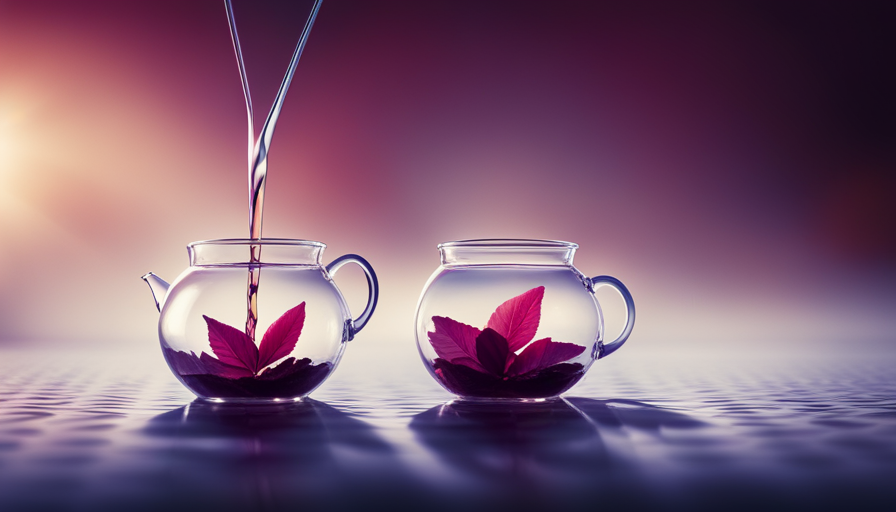
 Turmeric Tea3 months ago
Turmeric Tea3 months agoWhat Teas Have No Tannins
-

 Turmeric Tea3 weeks ago
Turmeric Tea3 weeks agoHow To Make Turmeric Tea With Powder
-
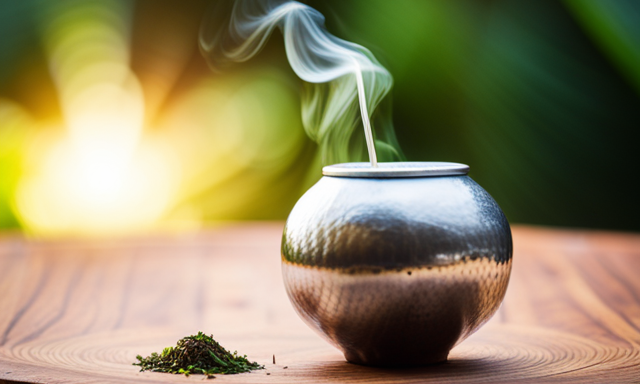
 Yerba Mate2 months ago
Yerba Mate2 months agoHow To Use Yerba Mate Straw
-

 Tea Brewing and Preparation3 months ago
Tea Brewing and Preparation3 months agoThe Science Behind Decaffeinated Tea: Methods And Benefits
-
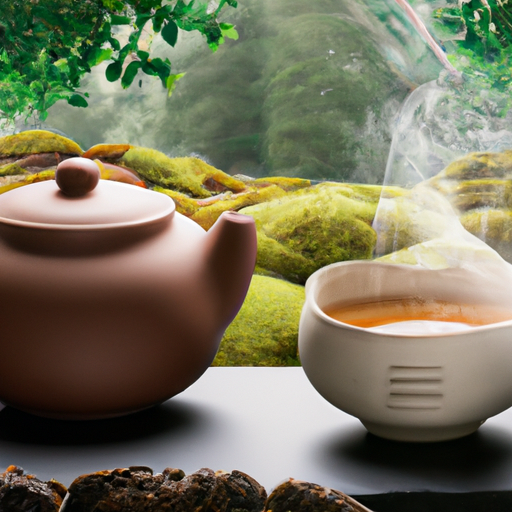
 Tea Brewing and Preparation3 months ago
Tea Brewing and Preparation3 months agoComparing Earl Grey And Green Tea: Benefits And Differences
-
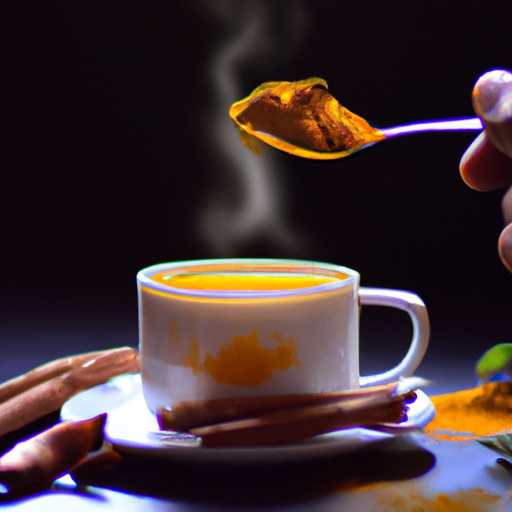
 Turmeric Tea3 months ago
Turmeric Tea3 months agoHow To Put Turmeric In Tea








